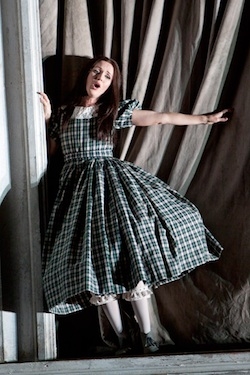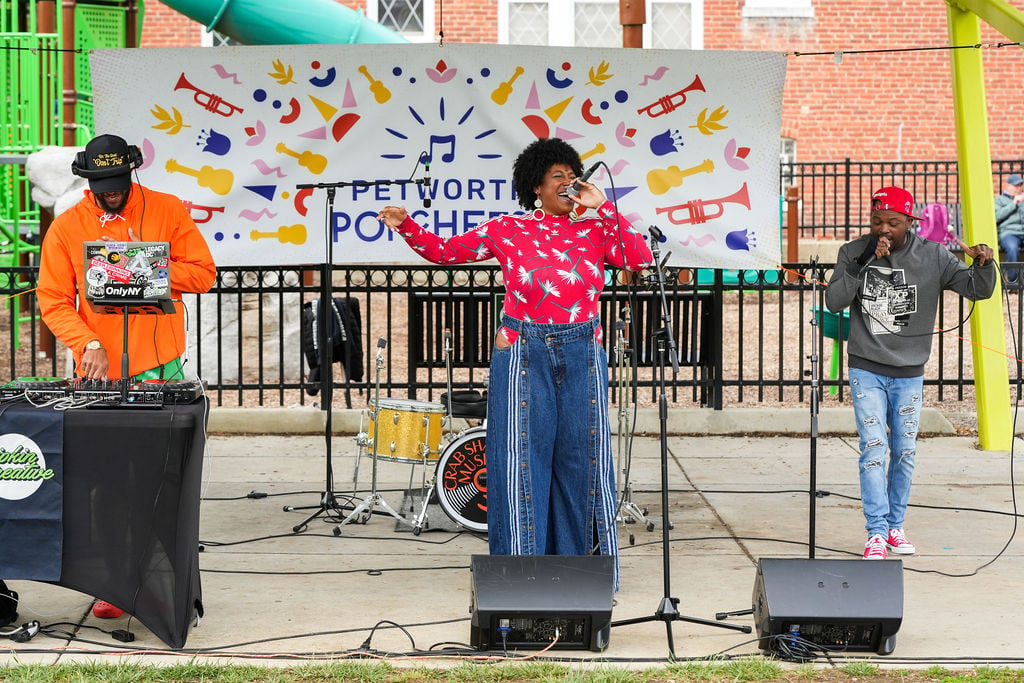
The Washington National Opera has opened a new production of Gaetano Donizetti’s Lucia di Lammermoor, the company’s first since 2002. Perhaps better known for champagne-sparkly comic operas, Donizetti excelled at writing gorgeous melodies and at finding astute musical characterizations for all kinds of situations, both comic and tragic. Lucia, with a libretto adapted by Salvatore Cammarano from the arch-romantic Walter Scott novel The Bride of Lammermoor, follows the story of a Scottish nobleman, Ashton (Enrico), who prevents his sister, Lucia, from loving his enemy, Ravenswood (Edgardo), in favor of a politically advantageous alliance with another man, Arturo. The already mentally fragile girl, confronted by Edgardo after signing the marriage contract, loses her senses, stabbing Arturo in their marriage bed. The subsequent mad scene, featuring the prima donna’s astounding feats of vocal derring-do, is one of the most celebrated in opera. As one murder apparently doesn’t shed enough blood for a tragic opera, Edgardo then kills himself on the tombs of his ancestors after learning that Lucia has died.
WNO is fielding two casts for this comparatively short performance run, and the good news is that both of them, heard at the Kennedy Center Opera House last Thursday (A cast) and Saturday night (B cast), are worth hearing. Both Lucias are impressive, but for different reasons. The A cast’s Sarah Coburn gave the more consistently beautiful performance, with especially clear fioriture (the intricate runs of fast notes in bel canto opera) and limpid, well-placed high notes. Her emphasis on flawless vocal execution reached its apogee in the cadenza at the end of the mad scene’s slow section, a place for the soprano to show off her technique. The B-cast Lucia, Russian soprano Lyubov Petrova, also sang the role here in 2002. While technically skilled and providing plenty of vocal thrill, she fell just shy of Coburn’s musical standard; the runs were a little less clear, and some of the high notes turned acidic and even faded out in the famous Act II sextet, where Lucia has to soar over the entire choral ensemble. Petrova sang a much simpler cadenza in the mad scene, but where Coburn was a little cold and sterile, even in the mad scene, Petrova was so dramatically compelling that when there was a pause in the music—a point at which the audience naturally applauds, as they did during Coburn’s performance, for example—the house remained in stunned silence.
As if to dispel opera’s fusty reputation, provocative director David Alden, whose 2007 staging of Jenufa was one of the best on the Kennedy Center Opera House stage in the last decade, has modernized Lucia into a disturbing, Strindbergian drama (created for English National Opera)—unsettling enough to earn a round of boos from the normally half-asleep Kennedy Center crowd on opening night. The setting is updated from the 17th century to the stifling repression of the Victorian era, and the sets (Charles Edwards), costumes (Brigitte Reiffenstuel), and lighting (Adam Silverman) are starved of color, creating a twilight world that evokes both the rundown estate of Ravenswood and the dingy ward of a mental asylum.
The two Enricos were evenly matched; the B cast’s Brian Mulligan showed the more powerful voice up to the highest notes, where the A cast’s Michael Chioldi was superior. The other, quite remarkable, difference was that Mulligan went much farther with Alden’s direction of the story, making Lucia’s brother appear just as crazy as she was, talking to himself and twitching with tics, while Chioldi seemed simply cruel. Clearly, something is not right in the Ashton family, although Cammarano and Donizetti do not make it explicit beyond Enrico’s desperate need to form a new alliance with Arturo and save his name. Alden’s interpretation centers on Enrico’s perverse possessiveness, an incestuous undertone that rumbles through the opera, as he ties Lucia to her bed and plays obsessively with her dolls and other toys. Lucia herself is infantilized, like a doll in a young girl’s clothing. This may not be to traditionalists’ tastes, but it made the brother-sister scenes much more compelling and overall created more tension.
Two striking company debuts tip the scale just slightly in favor of the A cast: Albanian tenor Saimir Pirgu’s Edgardo, for his sweet but still robust tone, and Italian bass Mirco Palazzi as Raimondo, the slimy family chaplain whom Alden has witness the disturbing brother-sister duet and then assist Enrico in getting her dressed for the wedding. In both casts, tenor Corey Evan Rotz gave a hilarious turn as Arturo, whom Enrico chooses to marry his sister, costumed here as a sort of Oscar Wilde–style dandy, a vain fop one is quite glad to see murdered.
Musically, the evening was so strong thanks to the company’s music director, Philippe Auguin, in the pit, navigating the many twists and turns of tempo adjustment necessary in this score to give the soloists the rhythmic space they need. The orchestra sounded in excellent form, in sync with one another and with their leader, and playing with confidence, from the Scotland-evoking horn calls to the extended harp solo in Act I. Some things improved from Thursday night to Saturday night: Set changes were quieter, and the chorus calmed its tendency to rush past Auguin’s beat.
The updated staging, if one takes the time to reflect on it, makes sense. Lucia’s overly dramatic nature and tendency toward elaborate fantasy are played out on a small stage, a Victorian home theater nowhere near as complicated as the one built by John Langdon Down in his home/hospital in Middlesex. Alden meant to evoke the treatment innovated by Down, having his patients perform music and drama onstage—the chorus serves as a silently applauding audience in the mad scene—but it works just as well as a way to understand Lucia as a self-centered and delusional romantic, the sort of person who might commit suicide because a favorite character in a novel had done so. The mad scene plays out quite literally as a scene on that stage, and in the concluding tomb scene, the action plays out behind the scenes—the final set shows the backstage of Lucia’s little theater, with the chorus or audience coming through the proscenium as drama evaporates into reality.
Washington National Opera’s production of Lucia di Lammermoor continues through November 19, with performances by the A cast (November 15 and 18) and the B cast (November 14, 16, and 19) at the Kennedy Center Opera House.

















